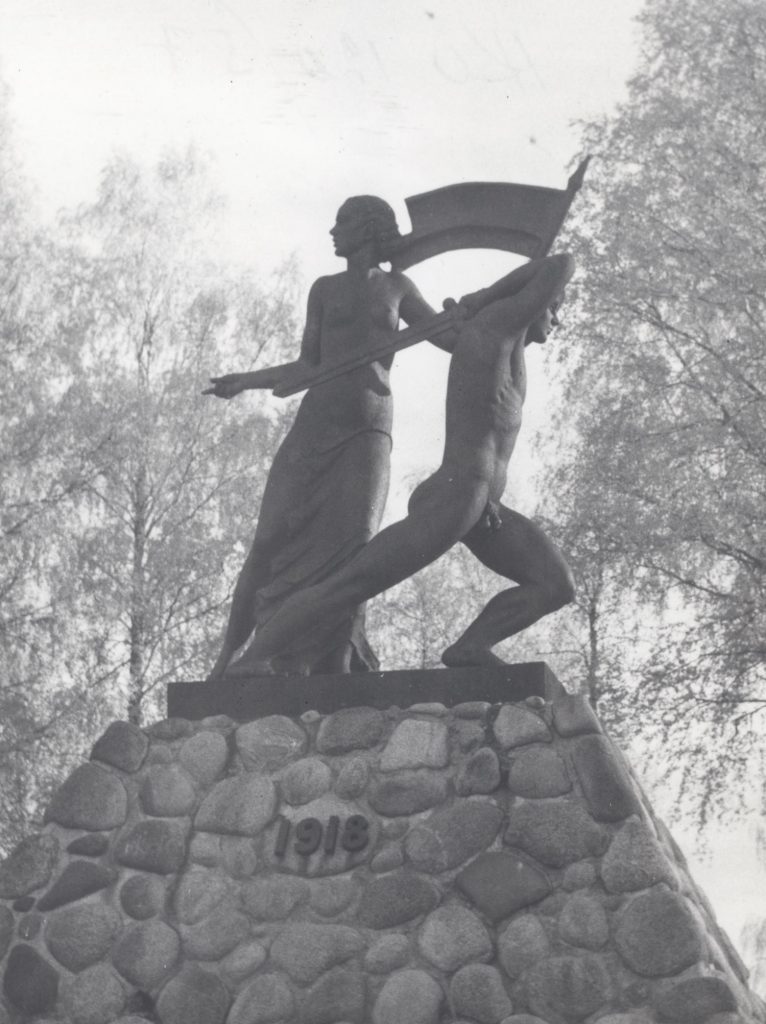Photograph of the unveiling of the memorial of Vilppula battle
MARCH 2018
Serlachius Museums’ image archive contains a photograph taken on 10 July 1938. It depicts the chief intendent of the white army of 1918, mill owner Gösta Serlachius giving an unveiling speech at the memorial of Vilppula battle.
After Finnish independency, Vilppulankoski was a key battleground in the civil war of the following spring. On one hand it is commemorated by Eino Koivisto’s memorial stone in memory of the Reds, erected in 1994 on the southern bank of the rapid. The Whites who won the war had unveiled their own memorial already in the summer of 1938. Gösta Serlachius’ active role and financial support made the erection of the memorial of Vilppula battle possible.
In the history of the civil war, Vilppula is recognized as the final line of the Ostrobothnian defence. In spring of 1918, the red offensive from the south was stopped at Vilppulankoski rapid. Contemporaries knew that ” if Vilppula stands, so will the White Finland”. In fact, Vilppula protected the railway crossing of Haapamäki and the victory at Vilppulankoski contributed to conquering of Tampere later on. Ultimately, it lead to the victory of the White side at the end of the war.
In the photograph, one can recognise the bronze sculpture by Arvi Tynys (1902–1959) behind the person giving the speech. It depicts a naked muscular man waving his sword toward the enemy. The ”Spirit of Freedom” behind him calls upon the troops to participate in the battle. The attack heading is toward the South against the Reds. The height of the bronze figures is 3,2 metres and the plinth made of large round stones is 3 meters high.
To realise the sculpture, a nation-wide fundraising was organised. Its revenue paid for the costs of the sculpture competition organised in 1935. Arvi Tynys won the competition with his entry ”Power of the heroes of Vilppula”. Originally the sculpture was supposed to be located in the white-water of the rapid but this proved to be too difficult. The bronze sculpture was cast in Helsinki by M. Virtanen’s foundry. Serlachius paid the costs.
The unveiling of Vilppula memorial belonged to the series of celebrations on the 20th anniversary of the so-called Liberation war that had been launched previous day in Vaasa. From there the commander-in-chief, War Marshal Gustaf Mannerheim and the majority of the honorary guests travelled in a night train rom Vaasa and arrived in Vilppula by the next morning to join the unveiling celebrations. Altogether 3000 persons participated.
Gösta Serlachius died in autumn of 1942, and the White Guard was disbanded a couple of years later. A problem arose as to what to do with the fortune owned by the White Guard? It was confiscated on the basis of the law. But the question remained, whether Serlachius had donated the sculpture to be the property of the White Guard Organisation or merely for it to maintain and protect the sculpture? No deed of conveyance has been found to prove the transfer. If the expression ”to be maintained and protected” used in the unveiling speech, is interpreted as a bequest, like the receiving party, Lauri Malmberg, had intended, the sculpture now belongs to the Finnish state. The site of the sculpture has undergone several exchanges of land, but the ownership of the sculpture has not been dealt with. The ownership still remains unclear.
Marjo-Riitta Simpanen
Curator, Art historian



